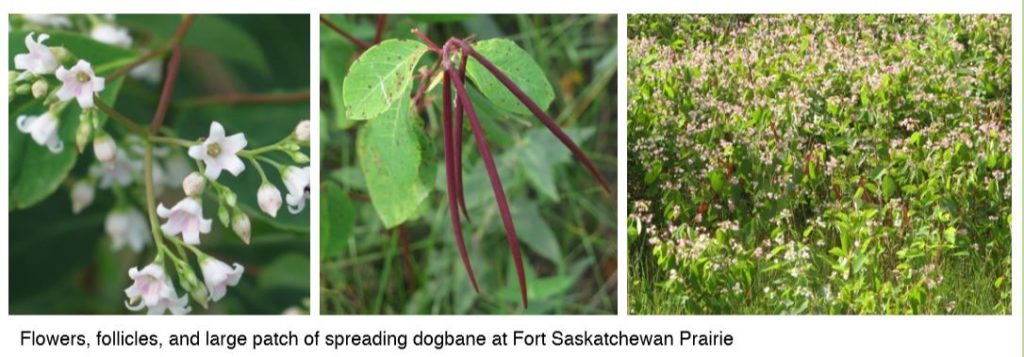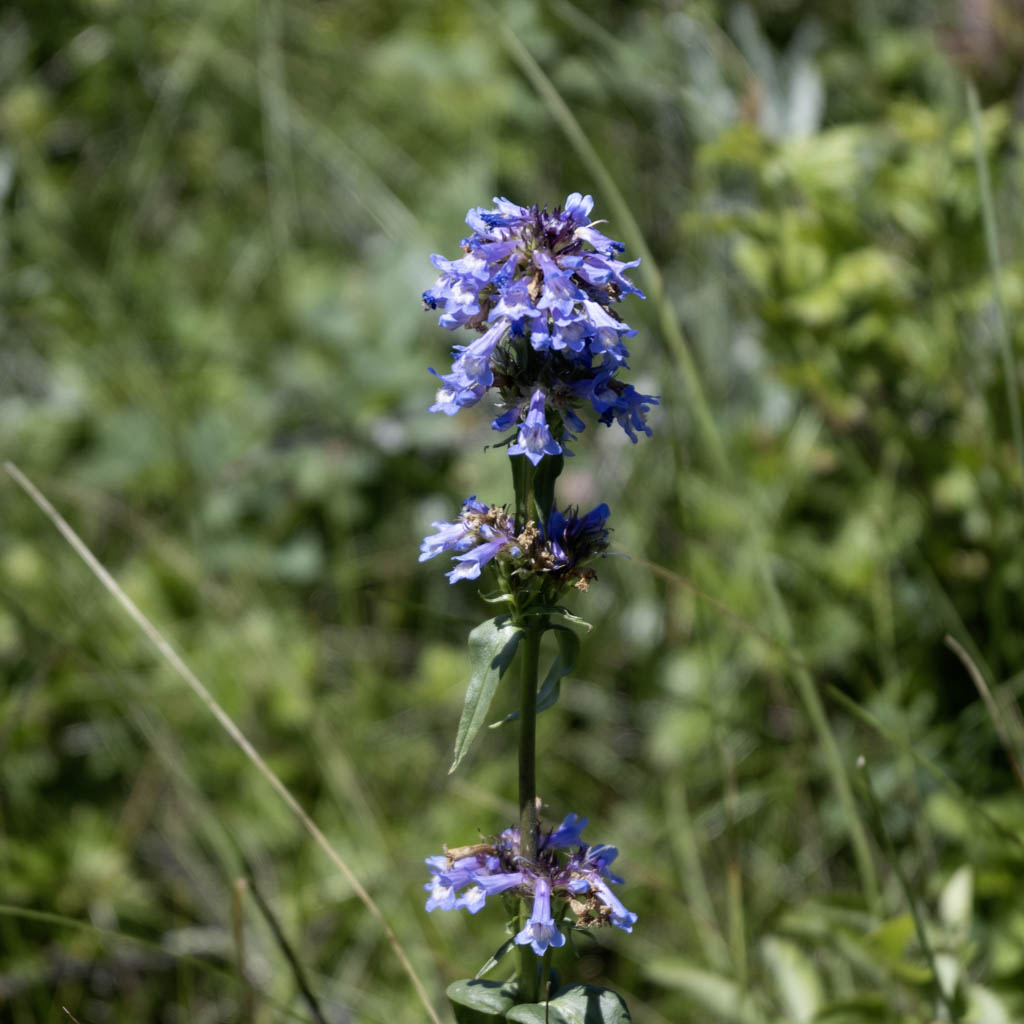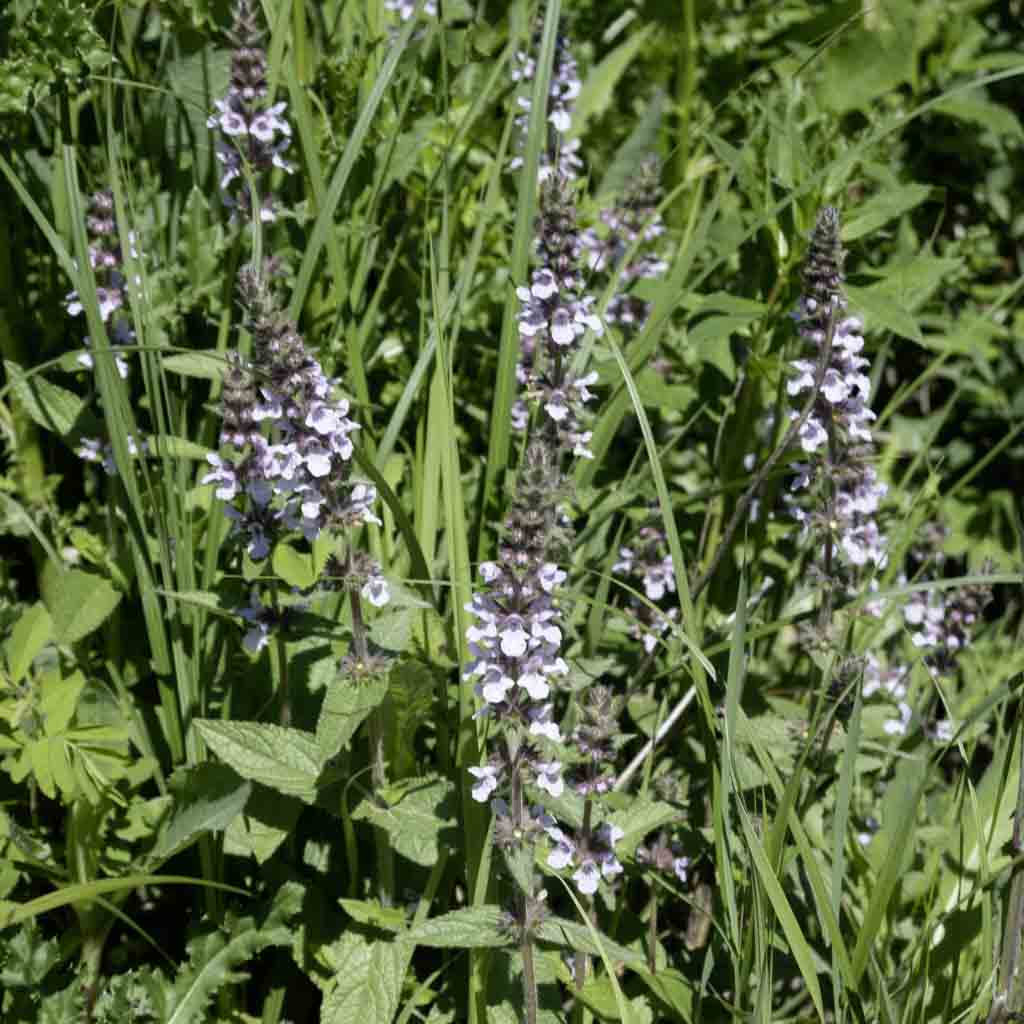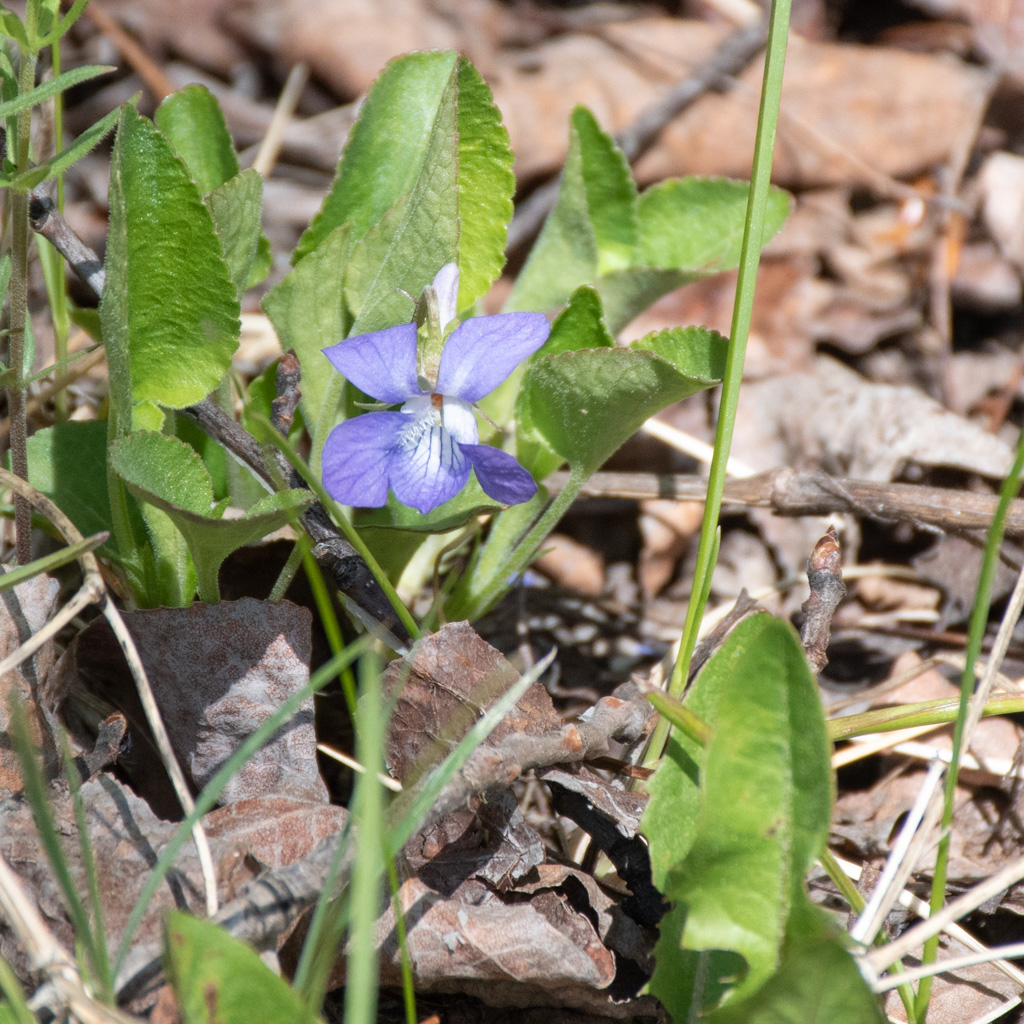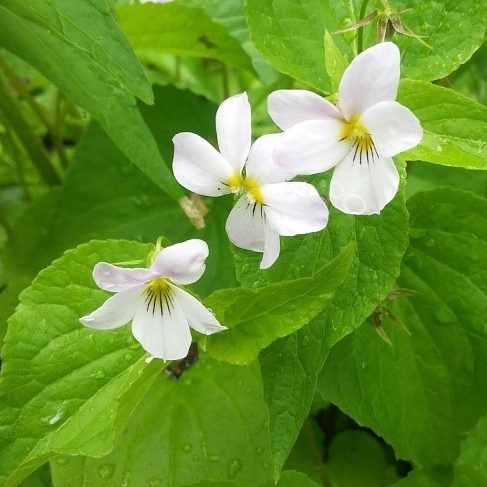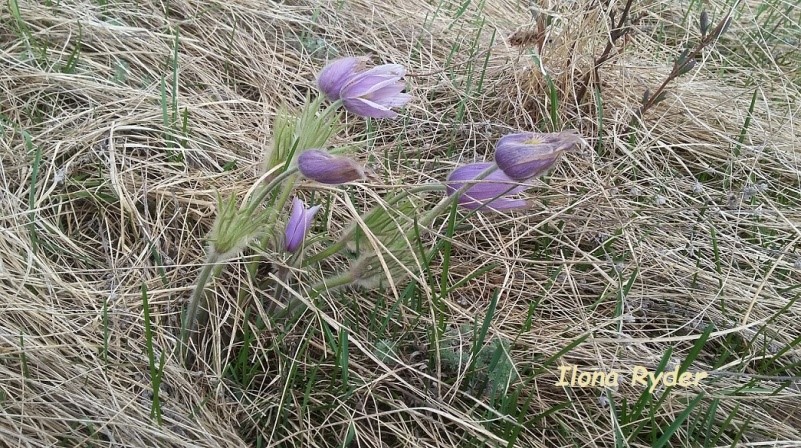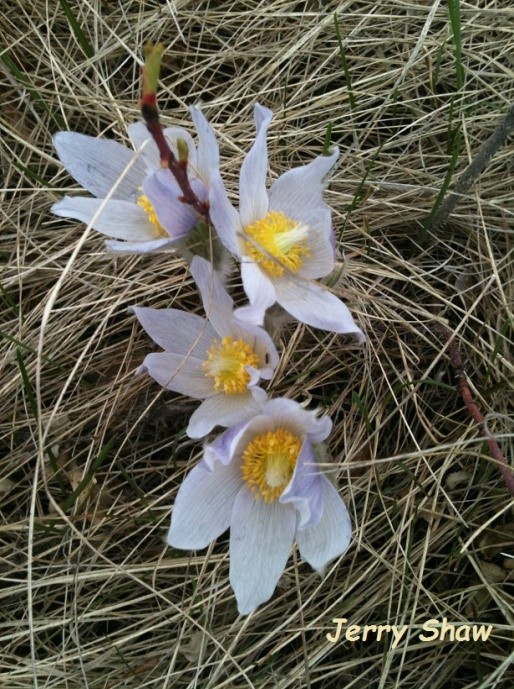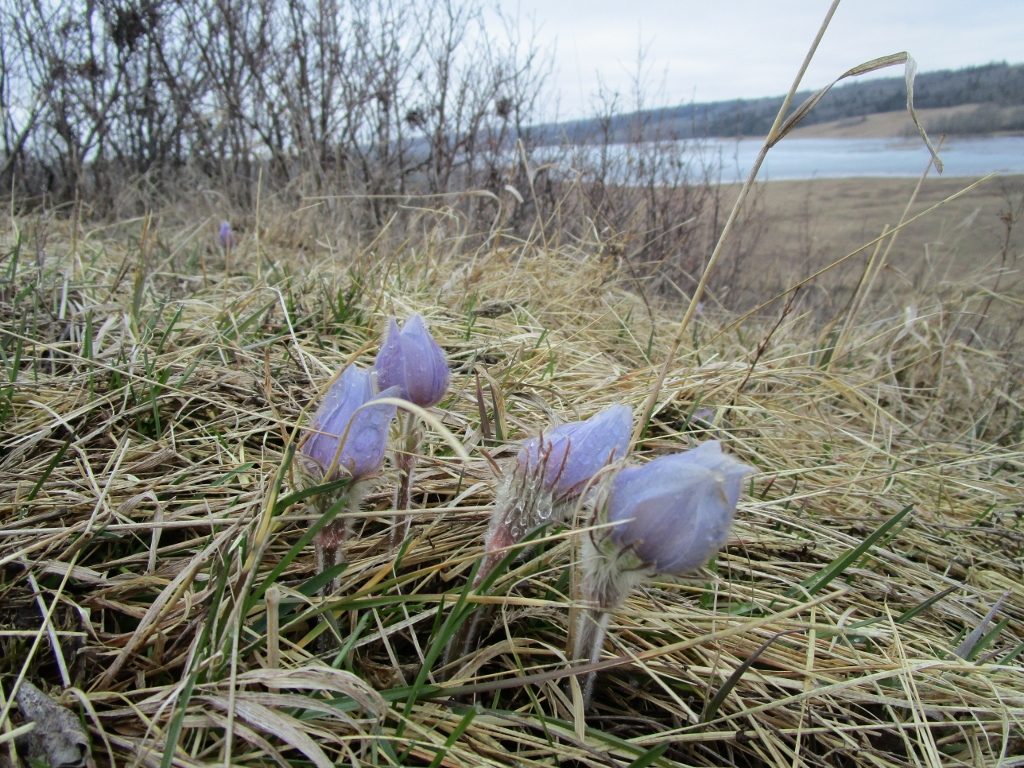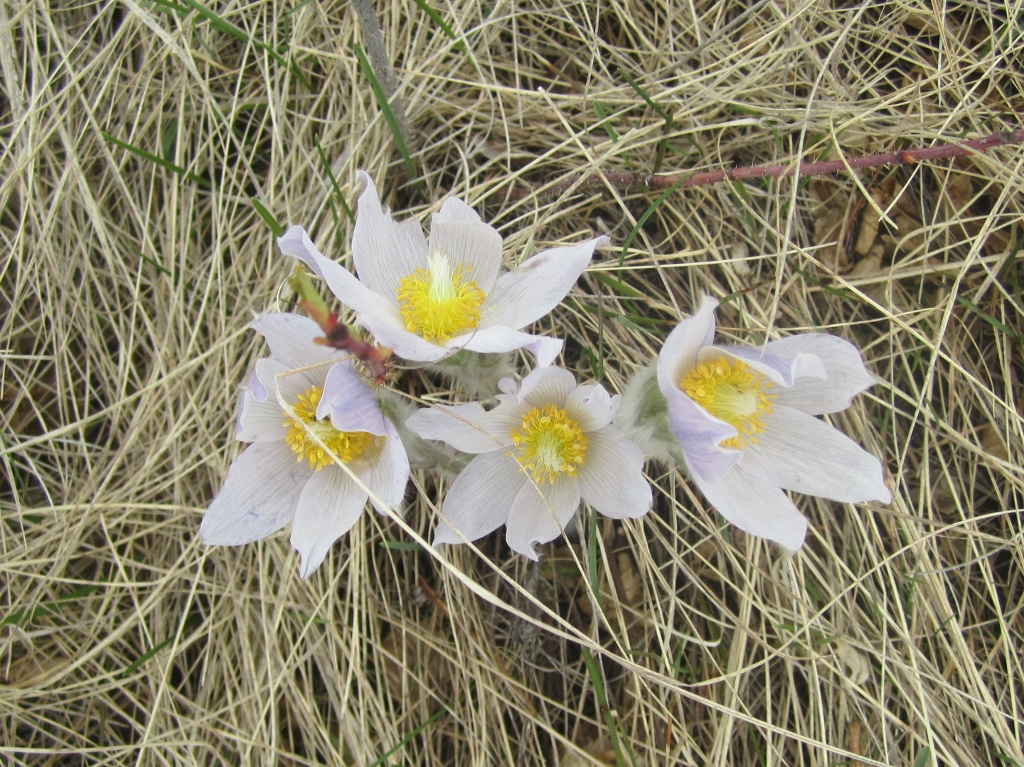Spreading Dogbane (Apocynum androsaemifolium) is a branched perennial herb found in dry thickets and borders of woods and beaver ponds all across Canada.
[lgc_column grid=”50″ tablet_grid=”50″ mobile_grid=”100″ last=”false”]
It is appreciated mostly in spring when the clusters of small, pink, bell-shaped flowers are showy and sweet-scented. If you look closely at the five-part flowers, you will see deeper pink lines (honey guides) that lead insects into them.
The fruits are long, narrow, crimson, twin pods that contain numerous seeds equipped with tufts of silky white hairs that aid in wind dispersal.
The plant is a “rhizomatous perennial” which means that many plants come from a common root stock, thus Spreading. The branches if broken produce a bitter milky sap that is toxic (Plants of Southern Interior British Columbia and the Inland Northwest)…hence the name “dogbane”.
[/lgc_column]
[lgc_column grid=”50″ tablet_grid=”50″ mobile_grid=”100″ last=”true”]
WASKAHEGAN FIELD NOTES
A large clone of this dogbane covers a long ridge along a section of the Waskahegan Trail just outside the Blackfoot Recreation Area. We hike this trail at spring flowering for the redolent dogbane.
The trail descends to one end of the large beaver pond where the Waskahegan Trail Association (WTA) had to build a new wooden walkway over a beaver re-flooded trail area in 2017. The beavers promptly built over part of the walkway. Eventually beavers and humans reached a compromise.
One can search many solitary dogbane plants in some years and find no flowers or seed pods later in the season as shown here. At the first sign of autumn frost, the plant’s leaves go bright yellow.
[/lgc_column]
